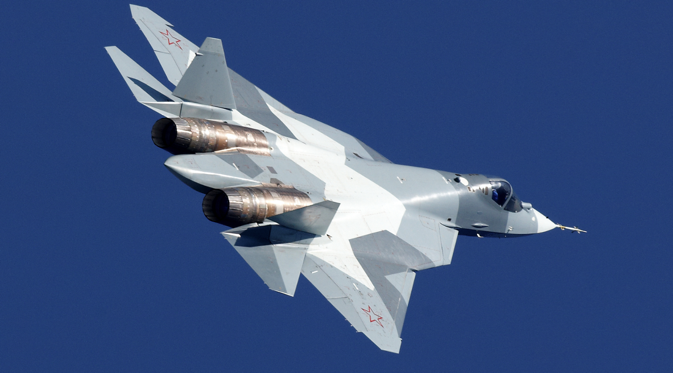
Russia wants a 5th generation fighter that keeps it competitive with American offerings. Source: Sukhoi.org
A working model of the new radar, radio-optical phased array antenna (ROFAR), being developed by the state-owned Radio-Electronic Technologies (KRET), should be ready in 2018.
The main advantage of ROFAR is the width of its transmission frequency. While the transmission frequency of a modern radar system is 10 GHz, with ROFAR it can reach 100 GHz.
"In practice, this means that ROFAR can produce a detailed 3D image of what is happening hundreds of kilometres away. For example, at 400 kilometers it can not only see a person, but even recognize their face", said Vladimir Mikheyev, Advisor to KRET's First Deputy CEO.
According to KRET, the future ROFAR will be half the weight of the conventional radar system currently being developed for the fifth-generation fighter. Simultaneously, the resolution will be ten times better, making it possible to "virtually get a TV picture in the radar range".
The use of radio-frequency photonic technology enables a significant reduction of aircraft visibility within the infrared spectrum, and of fuel consumption. This is possible because of the high efficiency of the future radar system, which will produce several times less heat. The developers will not have to include an additional powerful cooling system, which would significantly increase the mass of the product, and require electricity generated by the aircraft's engines at the cost of burning fuel.
It will not be possible to block ROFAR through high-power jamming. For jammers, the range of the electronic warfare system must be greater than that of the radio receiver, which is physically impossible with photonics-based radar.
If the ROFAR project is successfully completed, the technology will not only be used for airborne radar systems. According to Mikheyev, equipping Russian naval ships with ROFAR would make it possible to reduce the weight of on-board antenna systems by around 80-85%.
The announcements from the Russian manufacturers sound optimistic, but economic realities, shortcomings in organization and management, and difficulties with training and recruiting personnel may hinder implementation of these ideas. Russia still has problems mass-producing airborne active electronically scanned array (AESA) radar systems like those the U.S. has, not only on its fifth-generation F-22 and F-35 fighter aircraft, but also on its latest fourth-generation F-16 and F-15 fighters. The only Russian AESA radar system, Zhuk-A, designed for the MiG-35, was first unveiled in 2009 but was still at the testing stage at the end of 2015.
The Russian government has allocated 680 million rubles (less than $10 million) to the entire ROFAR program. In comparison, the U.S. Department of Defence allocated $110 million dollars in photonics in 2014, and plans to raise at least as much from private investors.
Not only Russia and the U.S.A. are involved in this technology race. Scientists from Italy unveiled a working model of a photonics-based radar system in March 2013. And Jean-Loïc Galle, Executive Vice-President at France's Thales Group, said the company is stepping up work in this area.
With such global competition, the announcements from Russia's KRET that working technology is to be built in the near future sound almost like a challenge, and represent a further test of the mettle of Russia's defence industry.
All rights reserved by Rossiyskaya Gazeta.
Subscribe
to our newsletter!
Get the week's best stories straight to your inbox